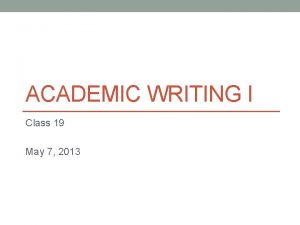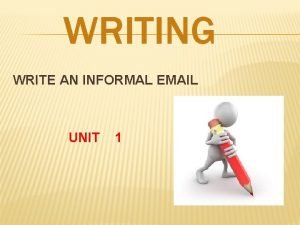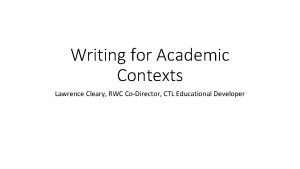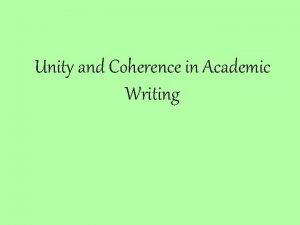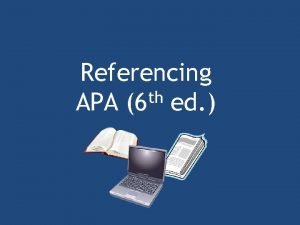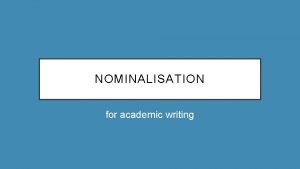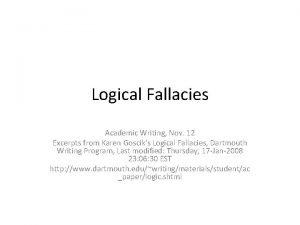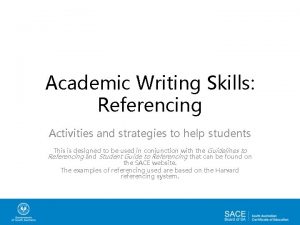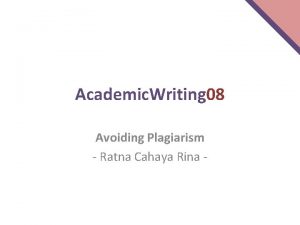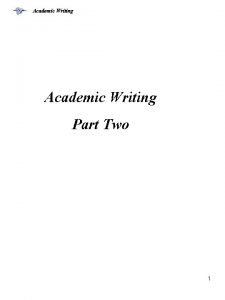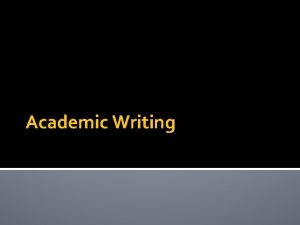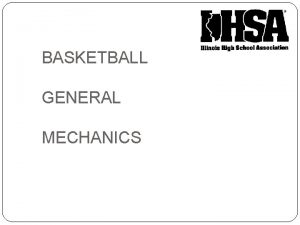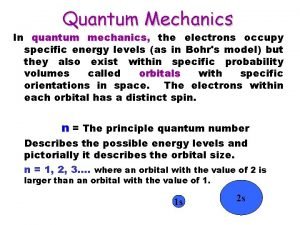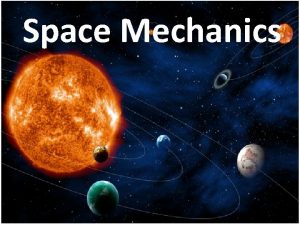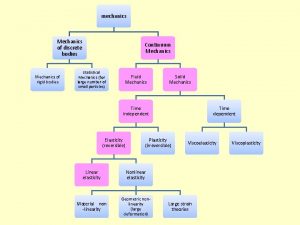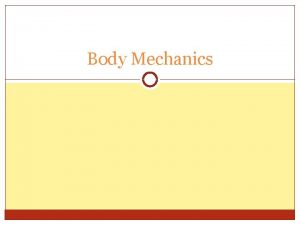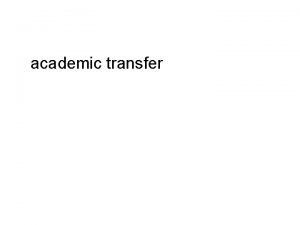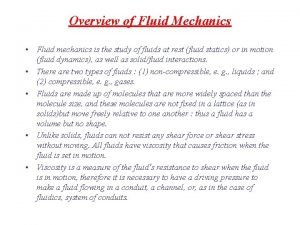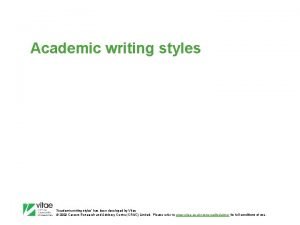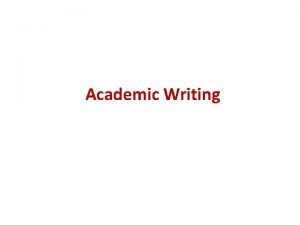ACADEMIC WRITING OVERVIEW MECHANICS OF WRITING ACADEMIC WRITING



















- Slides: 19

ACADEMIC WRITING -OVERVIEW -MECHANICS OF WRITING

ACADEMIC WRITING What is academic writing? � Writing something for the purpose of imparting knowledge or educating people. � It is expository writing. � Writing that answers a specific question or solves a specific problem.

WHAT ARE MECHANICS OF WRITING? Mechanics is a term we use to describe the technical aspects of writing

WHAT IS ACADEMIC WRITING?

FEATURES OF ACADEMIC WRITING Serious Formal Hedged Analytical Accurate Precise Responsible Structured Objective

WHAT IS AN ACADEMIC ESSAY ISCE I-Intelligence S-Substance C-Clarity E-Energy

MECHANICS OF AN ACADEMIC PAPER What You know �Relevance is important. �Gather information according to the topic. �Ask yourself: What do I know about my topic? What seems important to me about this topic? How does this topic relate to other things that I know? What don’t I know about my topic?

What �Aim you think is to come up with a fresh observation. �Analytical rather than personal.

MOVE ON FROM WHAT YOUKNOW ABOUT A SUBJECT TO WHAT YOU THINK ABOUT IT. How? � Summarize � Evaluate � Analyze � Synthesize

FIND A RHETORICAL STANCE. �Consider Your Position Audience Purpose Topic Context

WRITER your personal characteristics and interests affect what you write about and how you write about it

WRITER: FACTORS WHICH CAN AFFECT YOUR WRITING INCLUDE your age your experiences your gender your location your political beliefs your education your parents and peers your religion

PURPOSE: YOUR REASON FOR WRITING to ______ to inform to persuade to educate to call to action to shock

GENRE category of writing examples: autobiographical story, news article, review, editorial, analysis genres hinge upon purpose and the needs of the projected audience

AUDIENCE: TO WHOM ARE YOU WRITING? many of the same factors which affect the writer also affect the audience age social class education

TOPIC whatever it is that you have selected to write about may be broadened or narrowed, depending upon the length of the article and your level of interest

CONTEXT the “situation” which generates the need for writing affected by time period location current events cultural significance

WHAT THIS MEANS You need to be aware that a rhetorical situation exists EVERY TIME you write. You need to adapt your writing depending upon your purpose and your audience.

WRITING FOR DIFFERENT DISCIPLINES 1. 2. 3. 4. 5. 6. Social sciences Concise Clearly organized Third person Graphs, charts and illustrations Abstract Case Studies 1. 2. 3. 4. Business Type of audience & genre. Clear, direct and lively. Citation with footnotes and APA Report writing
 Academic and technical writing
Academic and technical writing Business writing vs academic writing
Business writing vs academic writing Useful language an informal email
Useful language an informal email How to write a introduction to an essay
How to write a introduction to an essay Writing in academic contexts
Writing in academic contexts Unity coherence
Unity coherence Quote about academic writing
Quote about academic writing Nominalization in academic writing
Nominalization in academic writing Logical fallacies in academic writing
Logical fallacies in academic writing Academic writing process
Academic writing process Myth or legend is academic writing
Myth or legend is academic writing Explicitness in writing
Explicitness in writing Harvard academic writing
Harvard academic writing How to list in academic writing
How to list in academic writing Assertive tones
Assertive tones Academic writing and composition
Academic writing and composition Contoh academic writing
Contoh academic writing Robert gunning principles of clear writing pdf
Robert gunning principles of clear writing pdf Academic english reading and writing across the disciplines
Academic english reading and writing across the disciplines Formality in academic writing exercises
Formality in academic writing exercises

